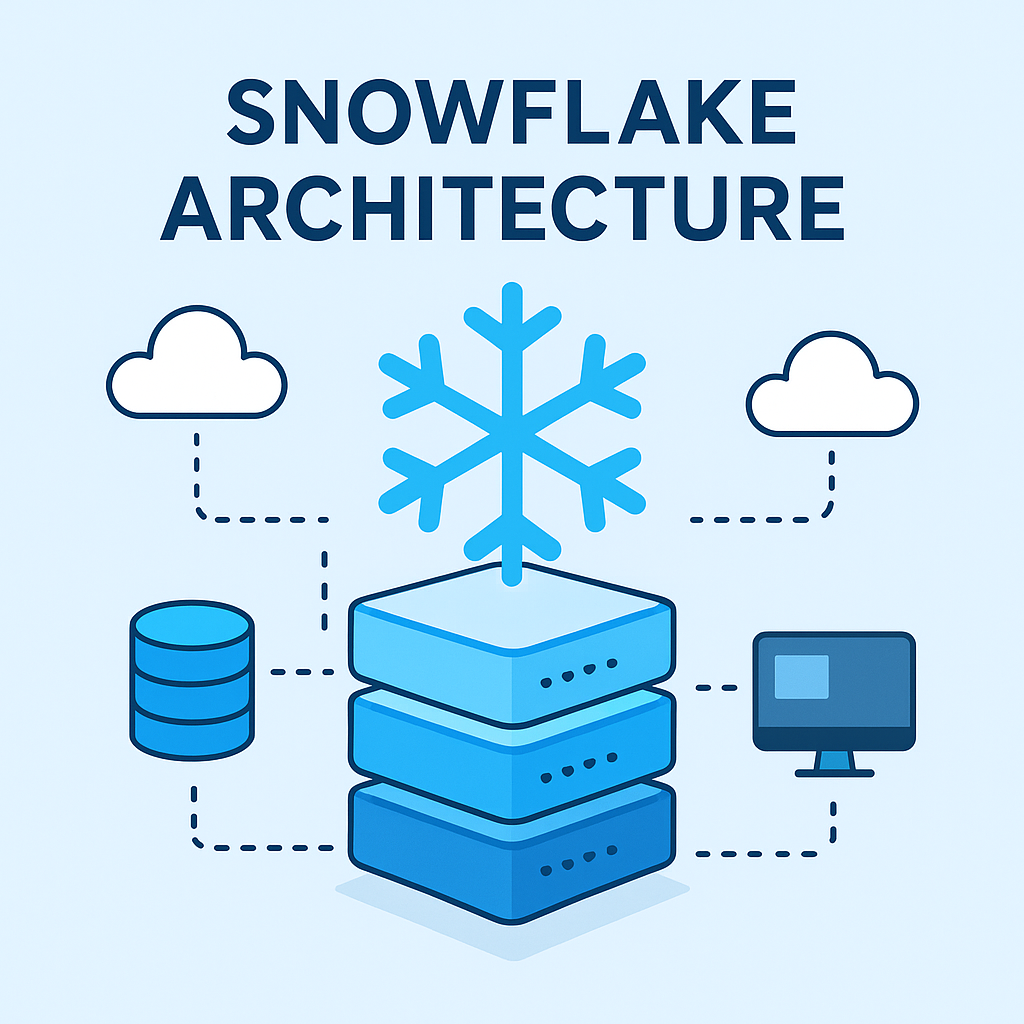Ever wondered why Snowflake keeps popping up in conversations about modern data platforms? It’s not just hype; it’s the architecture that sets it apart. While traditional databases cling to a monolithic design where storage and compute are tightly coupled (like an old married couple who do everything together), Snowflake breaks free from that mold. It separates storage and compute, allowing each to scale independently.
The Three-Layer Magic Behind Snowflake
Snowflake’s architecture is composed of three distinct layers, each with a specific role:
1. Storage Layer:
This is the foundation, where your data lives. Snowflake stores data in a columnar format, automatically compressing and optimizing it for performance and cost. It’s designed to be durable, scalable, and accessible to any compute cluster that needs it. You don’t have to worry about provisioning or managing disks; Snowflake handles it all behind the scenes.
2. Compute Layer:
Here’s where the heavy lifting happens. Snowflake uses virtual warehouses; independent compute clusters that can be spun up or down on demand. Each warehouse can process queries without affecting others, which means you can run multiple workloads simultaneously (think ETL jobs, dashboards, ad hoc analysis) without bottlenecks. Want to scale up for a massive query or scale out to support more users? Just adjust your compute resources with no downtime and no fuss.
3. Services Layer:
This is the brain of the operation. It handles metadata management, query parsing and optimization, authentication, and access control. When you submit a query, the services layer determines what data is needed, selects the appropriate compute resources, and orchestrates the entire process. It’s like a master conductor ensuring every instrument plays in harmony.
How It All Comes Together
Let’s walk through a typical query. You write a SQL statement and hit “run.” Snowflake’s services layer springs into action, analyzing the query and determining the best execution plan. It then spins up a virtual warehouse (or uses an existing one), fetches the relevant data from the storage layer, and processes the query. The result? Fast, reliable output whether you’re querying a few rows or crunching billions.
And here’s the kicker: multiple users can query the same data at the same time without stepping on each other’s toes. Thanks to the separation of compute and storage, each user or team can have their own virtual warehouse, ensuring performance isolation and eliminating resource contention.
Why This Architecture Matters
Snowflake’s design offers several game-changing benefits:
- Elastic Scalability: Scale compute up for intensive workloads or scale out to support more users. When you’re done, scale down to save costs.
- Concurrency Without Conflict: Multiple users and workloads can operate simultaneously without slowing each other down.
- Pay-As-You-Go Efficiency: You only pay for the compute you use. No need to keep resources running when they’re idle.
- Simplified Management: No infrastructure to manage, no tuning required. Snowflake handles optimization and maintenance automatically.
Final Thoughts
Snowflake’s multi-cluster shared data architecture isn’t just a technical innovation, it’s a paradigm shift. By decoupling storage and compute, it empowers organizations to be more agile, data-driven, and cost-conscious. Whether you’re a data engineer running batch jobs, a business analyst exploring dashboards, or a data scientist training models, Snowflake ensures that your workloads run smoothly, efficiently, and independently.
